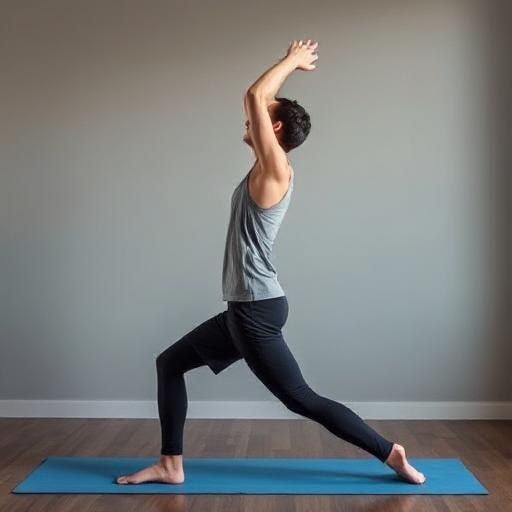Posture and Alignment in Tall Bodies: Fitness Strategies That Work

As a tall person, maintaining good posture and proper body alignment is crucial for your overall health and well-being. The unique structure of a tall body can sometimes make it harder to maintain balance and posture, leading to discomfort or even injury. Fortunately, with the right fitness strategies and consistent effort, tall individuals can improve their posture, enhance alignment, and reduce the risk of pain or injuries.
In this article, we will explore the significance of posture and alignment for tall bodies and provide fitness strategies that can help you achieve a healthier, more balanced posture.
Why Posture and Alignment Matter for Tall People
Tall individuals often face specific challenges when it comes to posture. The longer spine and limbs can lead to postural imbalances and an increased risk of back and neck pain. If you’re slouching or leaning forward to compensate for your height, this can place unnecessary strain on your muscles, joints, and ligaments. Additionally, poor posture can affect your overall appearance, making you seem less confident.
Proper alignment involves ensuring that the body is in its natural, neutral position, where the muscles and joints are under minimal stress. Good posture not only looks better but also improves breathing, reduces fatigue, and helps prevent injuries.
Fitness Strategies for Improving Posture and Alignment
To improve your posture and alignment, a combination of strength training, stretching, and balance exercises is essential. Here are some of the most effective strategies for tall people to enhance posture and alignment:
1. Strengthen the Core Muscles
A strong core is essential for maintaining good posture. The muscles of your abdomen, back, and pelvis work together to support the spine and keep it in alignment. Strengthening these muscles will help prevent slouching and support your spine during daily activities.
Core exercises:
Planks (front and side)
Russian twists
Deadbugs
Superman holds
2. Focus on Upper Back and Shoulder Exercises
Tall individuals often struggle with rounded shoulders or an exaggerated curve in the upper back (also known as kyphosis). Strengthening the upper back muscles, particularly the trapezius, rhomboids, and latissimus dorsi, can help counteract this issue and pull the shoulders back into a natural position.
Upper back exercises:
Reverse flys (with dumbbells or resistance bands)
Rows (using dumbbells, a resistance band, or a cable machine)
Face pulls (using a resistance band or cable machine)
Wall angels
3. Stretching the Chest and Front Shoulders
A tight chest and front shoulder muscles can contribute to poor posture by pulling the shoulders forward. Stretching these muscles regularly can help alleviate tightness and encourage proper shoulder alignment.
Chest and shoulder stretches:
Doorway chest stretch
Cobra stretch
Pec stretch on the wall
4. Incorporate Full-Body Mobility Exercises
Mobility exercises are essential for improving flexibility and ensuring that your joints can move freely. If you have tight hips, hamstrings, or ankles, it can affect your posture and alignment. Incorporating full-body mobility exercises will help you move better and maintain proper body alignment.
Mobility exercises:
Hip flexor stretches
Hip circles
Ankle mobility drills
Cat-cow stretches
Spinal rotations
5. Practice Balance and Stability Exercises
Having good balance is key to maintaining proper alignment throughout your day. Balance exercises can help strengthen the stabilizing muscles around your ankles, knees, and core, making it easier to stay upright and aligned.
Balance exercises:
Single-leg deadlifts
Single-leg standing with eyes closed
Bosu ball squats
Standing on one leg
6. Pay Attention to Your Daily Habits
In addition to structured exercise routines, daily habits play a significant role in maintaining good posture. Be mindful of how you sit, stand, and walk throughout the day to avoid putting unnecessary strain on your body.
Here are some tips for better posture in daily life:
Sit with your back straight and shoulders relaxed, keeping your feet flat on the floor and your knees at a 90-degree angle.
Avoid slouching or hunching over when sitting at a desk or while using your phone.
Stand tall with your shoulders back and avoid locking your knees.
When lifting objects, bend your knees and avoid rounding your back.
The Importance of Posture in Health
Good posture and alignment are more than just about looking confident and standing tall. They have a significant impact on your health, including:
Reduces back and neck pain: Proper alignment takes stress off the spine, reducing the likelihood of pain or discomfort in the back, neck, and shoulders.
Improves lung function: Good posture allows the lungs to expand fully, improving breathing and oxygen intake.
Boosts confidence: Standing with good posture can make you appear taller, more confident, and approachable.
Enhances digestion: A neutral spine allows for better digestion by creating more space for the stomach and intestines.
Prevents injuries: Proper alignment ensures that muscles and joints are moving efficiently, reducing the risk of strain or injury.
Key Takeaways
Core strength is crucial for maintaining good posture. Incorporate core exercises like planks and deadbugs into your routine.
Focus on strengthening the upper back muscles to improve shoulder alignment and prevent slouching.
Stretch the chest and shoulders to alleviate tightness that could pull the shoulders forward.
Mobility exercises for the hips, ankles, and spine can improve flexibility and help maintain alignment.
Balance exercises strengthen stabilizing muscles, improving your ability to maintain good posture and alignment.
Pay attention to daily habits like sitting, standing, and walking to reinforce proper posture throughout the day.
FAQ: Posture and Alignment for Tall People
Q1: How can I improve my posture if I’m always slouching?
Strengthening your core, doing upper back exercises, and being mindful of your posture throughout the day can help you stop slouching and improve alignment.
Q2: Are there specific exercises to correct rounded shoulders?
Yes! Exercises like reverse flys, rows, and wall angels target the muscles that help retract the shoulders, correcting rounded posture.
Q3: How can I prevent back pain as a tall person?
Incorporating core-strengthening exercises, mobility work, and being mindful of your posture can help prevent back pain. Avoid slouching and practice good posture throughout the day.
Q4: Can yoga help with posture and alignment?
Absolutely! Yoga is excellent for improving flexibility, mobility, and alignment. Poses like Cobra, Cat-Cow, and Child’s Pose are particularly beneficial for posture.






